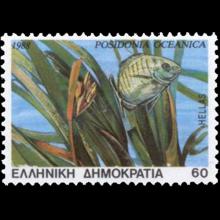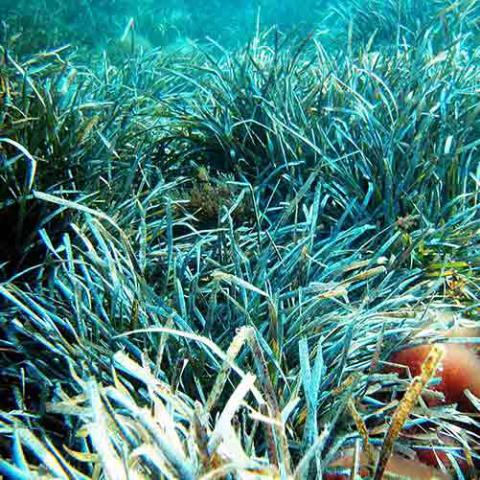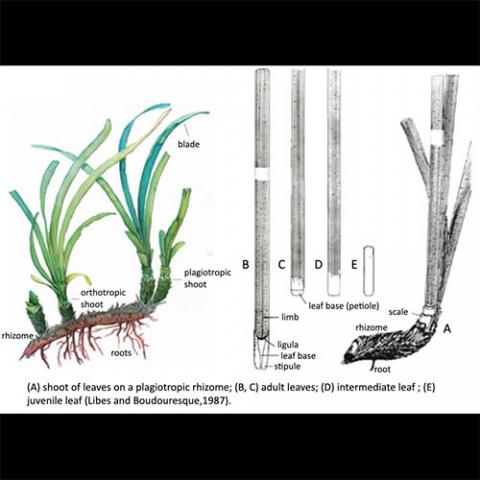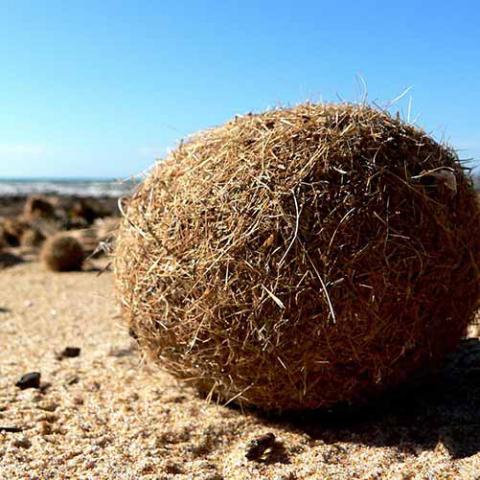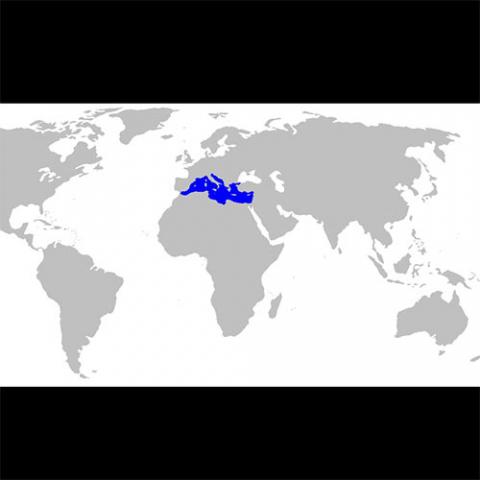NAME(S)
TAXONOMY
PLANTAE ID
THERAPEUTIC
Greece
Issued:
Stamp:
Posidonia oceanica
Greece
Issued:
Stamp:
Posidonia oceanica
Greece
Issued:
Stamp:
Posidonia oceanica
Behemoth Seagrass Clones Among Earth's Oldest Organisms
by Charles Q. Choi February 01, 2012
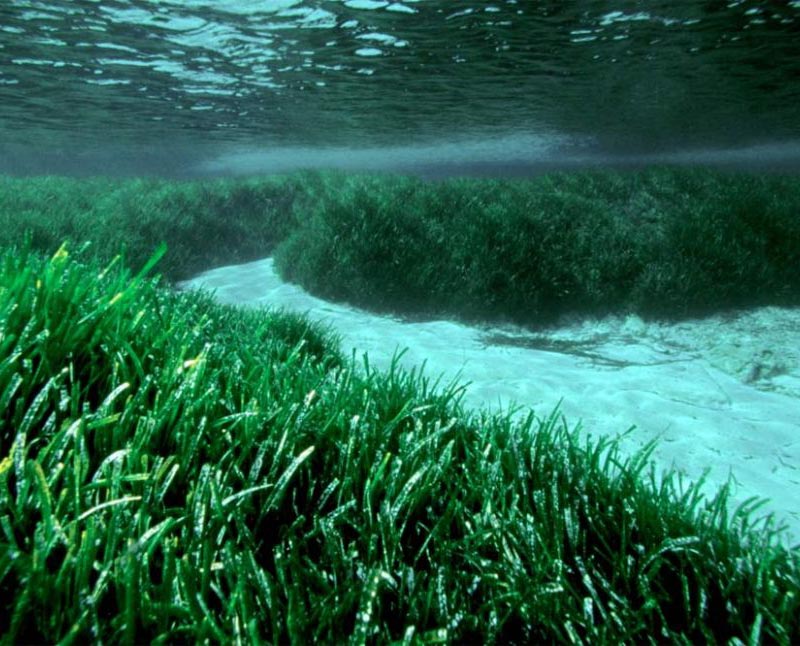
(Image: © M. San Felix )
Seagrass meadows can be composed of ancient giant clones, organisms stretching up to nearly 10 miles wide that may be up to tens of thousands of years old, scientists find.
The seagrass in question, Posidonia oceanica, reproduces either sexually through flowering or asexually by generating clones of itself. This can result in single organisms that are very large and very old. Such clonal organisms may be the oldest and largest life forms in the world — for instance, the honey mushroom Armillaria solidipes may span up to 3.4 square miles (8.8 sq kilometers) in area and the quaking aspen (Populus tremuloides) may reach up to 6,000 metric tons in mass.
"Clonal organisms have this extraordinary capacity that when a 'perfect' genome emerges, it can be transmitted through generations without being altered, and has potentially no end," said researcher Sophie Arnaud-Haond, a marine biologist at the French Research Institute for Exploration of the Sea.
However, theory predicts the genome of a clone organism will, "through the process of copying, be altered slightly by what are called 'somatic mutations' — copy errors," Arnaud-Haond said. "Accumulate those mutations, most of which are expected to have a negative impact, and over generations, it will degenerate and eventually disappear. The age of clonal organisms should therefore be limited as well."
To learn more about how long the seagrass P. oceanica can actually live, researchers analyzed 40 meadows of it across 2,175 miles (3,500 km) of the Mediterranean.
Not all of the seagrass the scientists discovered was genetically identical. However, the seagrass clones they did find suggest both extreme size and age. Some reached up to 9.3 miles (15 km) wide and may well be more than 100,000 years old.
"Posidonia oceanica ranks amongst the oldest organisms revealed thus far," Arnaud-Haond told LiveScience.
Computer models helped demonstrate that Posidonia oceanica has a mode of spread common to other seagrasses that allows the plant to avoid the accumulation of deleterious mutations and explains how it escapes the degeneration expected of clonal organisms.
"The understanding of the particularities that rendered those genomes so adaptable to a broad range of environmental conditions may be the focus of extremely interesting research in the future," Arnaud-Haond said.
Seagrasses are the foundation of key coastal ecosystems but have waned globally for the past 20 years, with P. oceanica meadows declining at an estimated rate of about 5 percent annually.
"Posidonia oceanica's clones have been able to survive greatly fluctuating environmental conditions, and meadows we observe nowadays are the outcome of millennia of evolution. On the one hand, this suggests an ability to cope with environmental change that could be a positive clue on their ability to cope with medium- and long-term prospects of global change. On the other hand, changes are occurring nowadays at an unprecedented rate, and the sharp decline of seagrass meadows in general and Posidonia oceanica in particular is raising concerns as to the ability of this slow-growing species and its old, patiently selected clones to face these new and rapidly occurring environmental challenges."
The scientists detailed their findings online in the Feb. 1 issue of the journal PLoS ONE.
Reference: livescience.com
Genus species (Plantae): Posidonia oceanica
Posidonia oceanica, commonly known as Neptune grass or Mediterranean tapeweed, is a seagrass species that is endemic to the Mediterranean Sea. It forms large underwater meadows that are an important part of the ecosystem. The fruit is free floating and known in Italy as "the olive of the sea" (l'oliva di mare). Balls of fibrous material from its foliage, known as egagropili, wash up to nearby shorelines.
Description
Posidonia oceanica is a flowering plant which lives in dense meadows or along channels in the sands of the Mediterranean. It is found at depths from 1–35 meters (3.3–114.8 ft), according to water clarity. Subsurface rhizomes and roots stabilize the plant while erect rhizomes and leaves reduce silt accumulation.
The leaves are ribbon-like, appearing in tufts of 6 or 7, and up to 1.5 meters (4.9 ft) long. Average leaf width is around 10 millimeters (0.39 in). The leaves are bright green, perhaps turning brown with age, and have 13 to 17 parallel veins. The leaf terminus is rounded or sometimes absent because of damage. Leaves are arranged in groups, with older leaves on the outside, longer and differing in form from the younger leaves they surround.
The rhizome type stems are found in two forms: one growing up to 150 centimeters (59 in) beneath the sand and the other rising above the sand. All stems are approximately 10 millimeters (0.39 in) thick and upright in habit. This arrangement of the rhizomes eventually forms a mat; the surface contains the active parts of the plant, whereas the center is a dense network of roots and decomposing stems.
In 2006 a huge clonal colony of P. oceanica was discovered south of the island of Ibiza and stretches as far south as La Savina and Es Pujols on the island of Formentera. At 8 kilometers (5.0 mi) across, and estimated at around 100,000 years old, it may be one of the largest and oldest clonal colonies on Earth.
Distribution and Habitat
This species is found only in the Mediterranean Sea where it is in decline, occupying an area of about 3% of the basin. This corresponds to a surface area of about 38,000 square kilometers (15,000 sq mi). Posidonia grows best in clean waters, and its presence is a marker for lack of pollution. The presence of Posidonia can be detected by the masses of decomposing leaves on beaches. Such plant material has been used for composting, but Italian laws prohibit the use of marine algae and plants for this purpose.
Secondary metabolites
To date 51 natural products have been reported from P. oceanica, including natural phenols, phenylmethane derivatives, phenylethane derivatives, phenylpropane derivatives and their esters, chalkones, flavonols, 5-alpha-cholestanes, and cholest-5-enes. Many of the compounds reported for P. oceanica were, however, not detected by appropriate phytochemical methods and some most probably represent artifacts and are not genuine natural products of P. oceanica.
Reference: Wikipedia
Photo: Alberto Romeo
Photo: Ezu (Martino A. Sabia)

